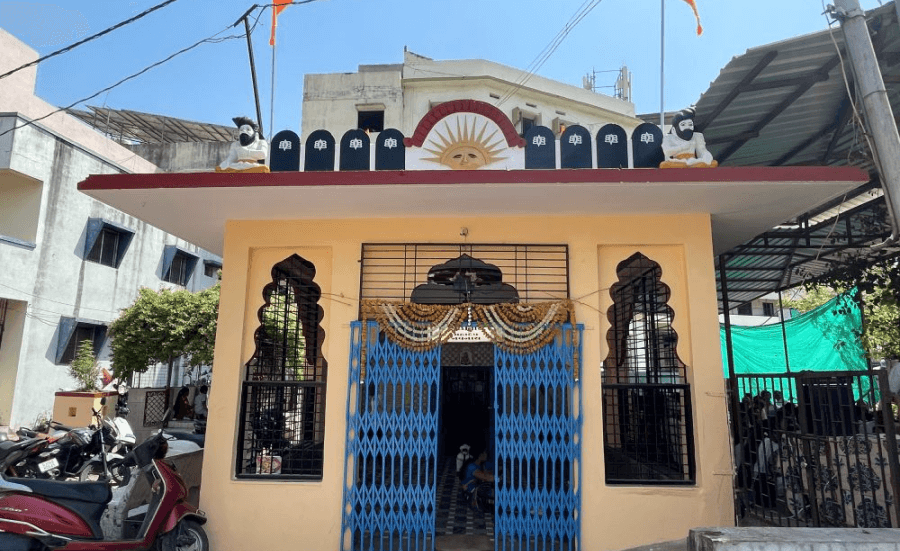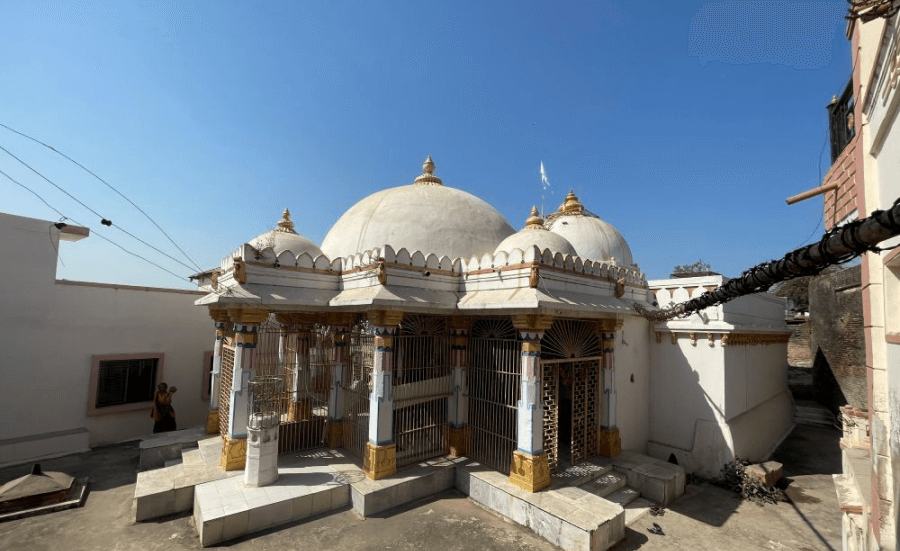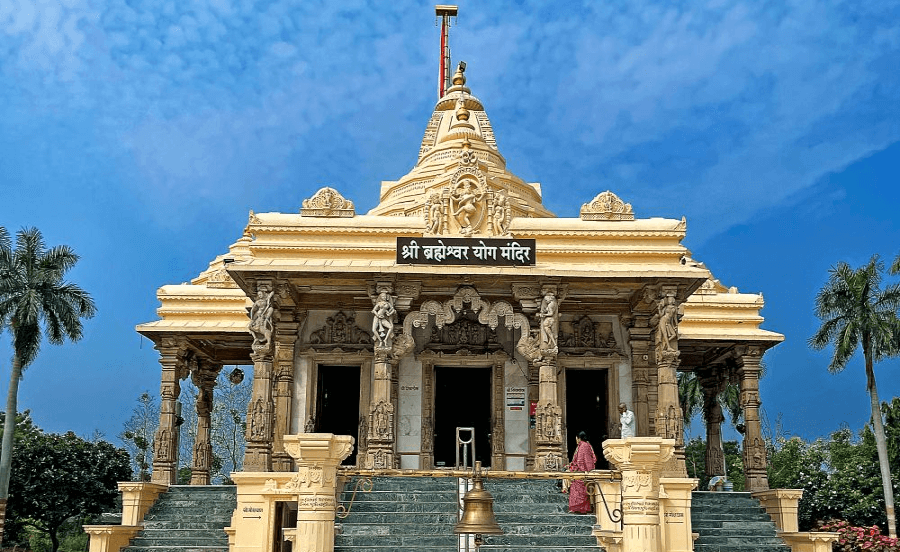
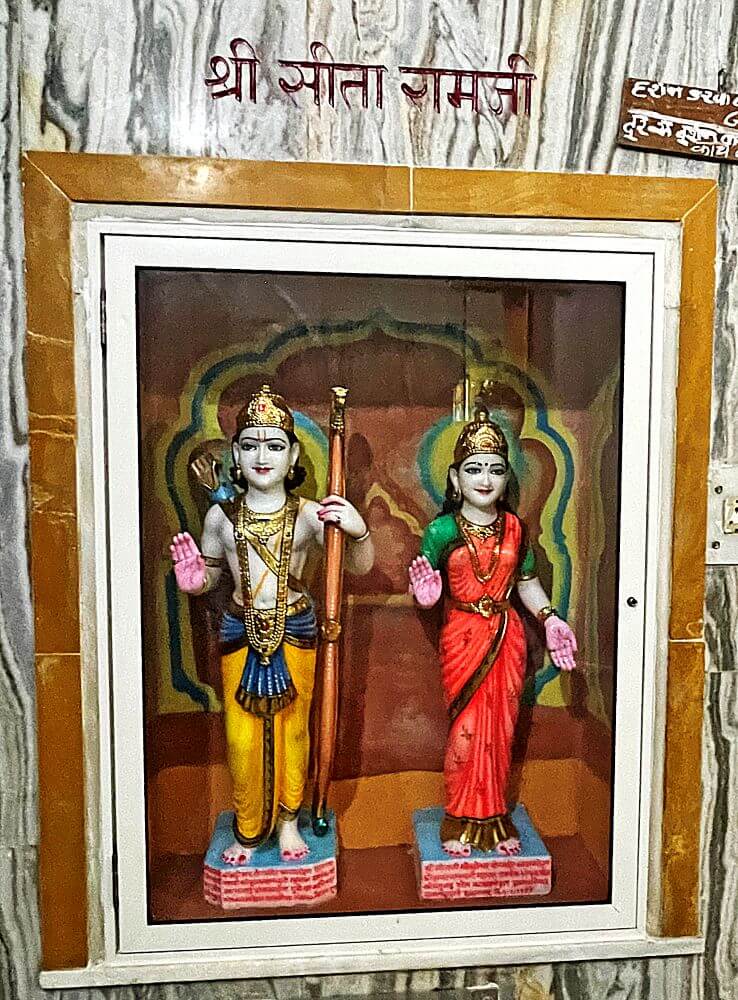 Kayavarohan village, located in Vadodara district, is often referred to as the ‘Kashi of Gujarat.’ It is considered the 51st among the 68 renowned pilgrimage sites (maha teerthas) in India. The Brahmeshwar Yog Temple here is also known as the Kayavarohan Mahadev Temple, dedicated to Lord Lakulish, a form of Shiva. The Shiva linga in this temple is believed to have been established by the sage Vishwamitra. This site is a significant centre for the Pashupata sect, and in ancient texts, it is described as both a Shaiva pilgrimage site and a Shakti Peeth (a place of great spiritual power).
Kayavarohan village, located in Vadodara district, is often referred to as the ‘Kashi of Gujarat.’ It is considered the 51st among the 68 renowned pilgrimage sites (maha teerthas) in India. The Brahmeshwar Yog Temple here is also known as the Kayavarohan Mahadev Temple, dedicated to Lord Lakulish, a form of Shiva. The Shiva linga in this temple is believed to have been established by the sage Vishwamitra. This site is a significant centre for the Pashupata sect, and in ancient texts, it is described as both a Shaiva pilgrimage site and a Shakti Peeth (a place of great spiritual power).
Kayavarohan, situated about 15 kilometres from the banks of the Narmada River, has a rich mythological history. According to legends, this sacred place existed across all four yugas (ages). In the Shiva Purana, the Ganakariyaka part devotes four chapters to the importance of Kayavarohan. It is said that the site was known as Ichhapuri in the Satya Yuga, Mayapuri in the Treta Yuga, and Medhavati in the Dwapara Yuga. In the current age, ‘Kali Yuga’, it is called Kayavarohan. (Krite Ichhapuri naam Tretayam cha Mayapuri। Dwapare Medhavati naam Kalau Kayavarohana।।). The name Kayavarohan refers to the descent (or manifestation) of Lord Shiva in a human form. According to
mythology, at the junction between the ‘Dwapara’ and ‘Kali’ Yugas, Lord Shiva descended at this very place in the form of Lakulish. 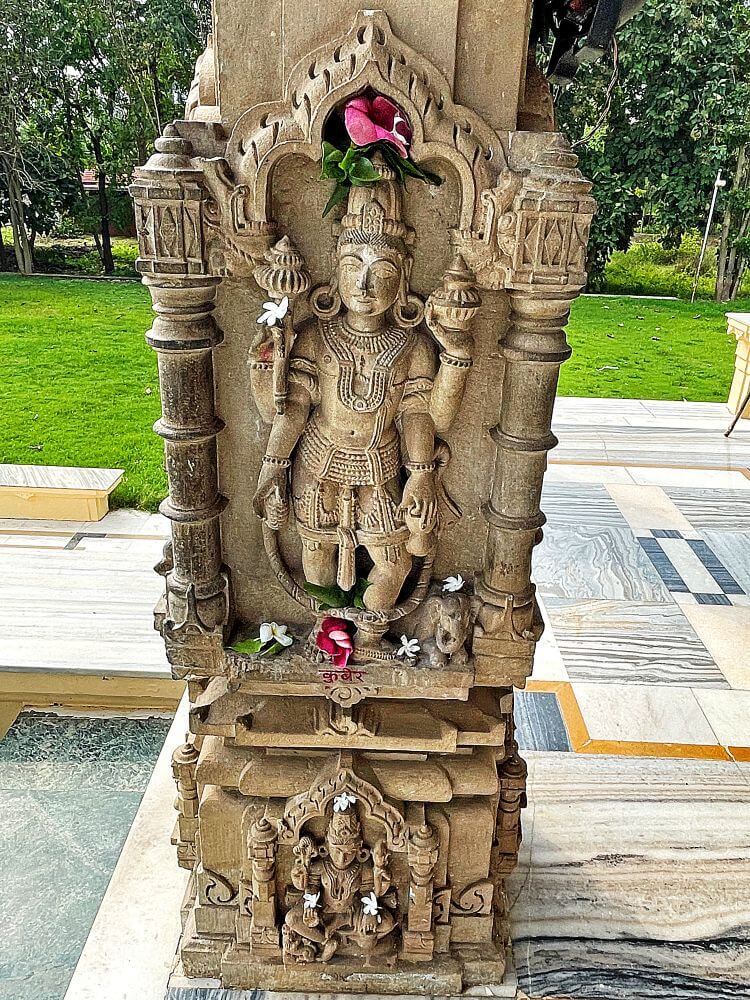 Sage Lakulish is regarded as the final incarnation of Lord Shiva, and he is mentioned in ancient texts like the ‘Vayu Purana’, ‘Linga Purana’, and ‘Kurma Purana’. After completing his divine mission, Lakulish merged into the Brahmeshwar Jyotirlinga at this site, hence the temple is also known as Brahmeshwar Temple.
Sage Lakulish is regarded as the final incarnation of Lord Shiva, and he is mentioned in ancient texts like the ‘Vayu Purana’, ‘Linga Purana’, and ‘Kurma Purana’. After completing his divine mission, Lakulish merged into the Brahmeshwar Jyotirlinga at this site, hence the temple is also known as Brahmeshwar Temple.
Archaeological excavations in Kayavarohan have uncovered artefacts and sculptures dating back to the 2nd century. The village has been declared an ancient heritage site by the Archaeological Survey of India. The history of this place reveals that between the 11th and 17th centuries, it suffered multiple invasions, during which many Shiva temples were destroyed. However, the faithful preserved the Shiva lingas, and they are the ones enshrined in the temples today. Swami Kripalvananda of the Lakulish sect restored the Brahmeshwar temple, and it is said that his guru, Pranavananda Maharaj (Dada ji), was an incarnation of Lakulish himself. Swami Kripalvananda first met his guru near a Devi temple in the Bhuleshwar area of Mumbai. The Brahmeshwar temple’s foundation stone was laid by Jagadguru Shankaracharya of Dwarka Peeth on 29 November 1968, and five years later, on 3 May 1974, the Brahmeshwar Jyotirlinga was consecrated in the temple by him.
The temple is surrounded by lush greenery and is enclosed by a large boundary wall. The grand entrance to the temple features tall half-columns embedded in the walls,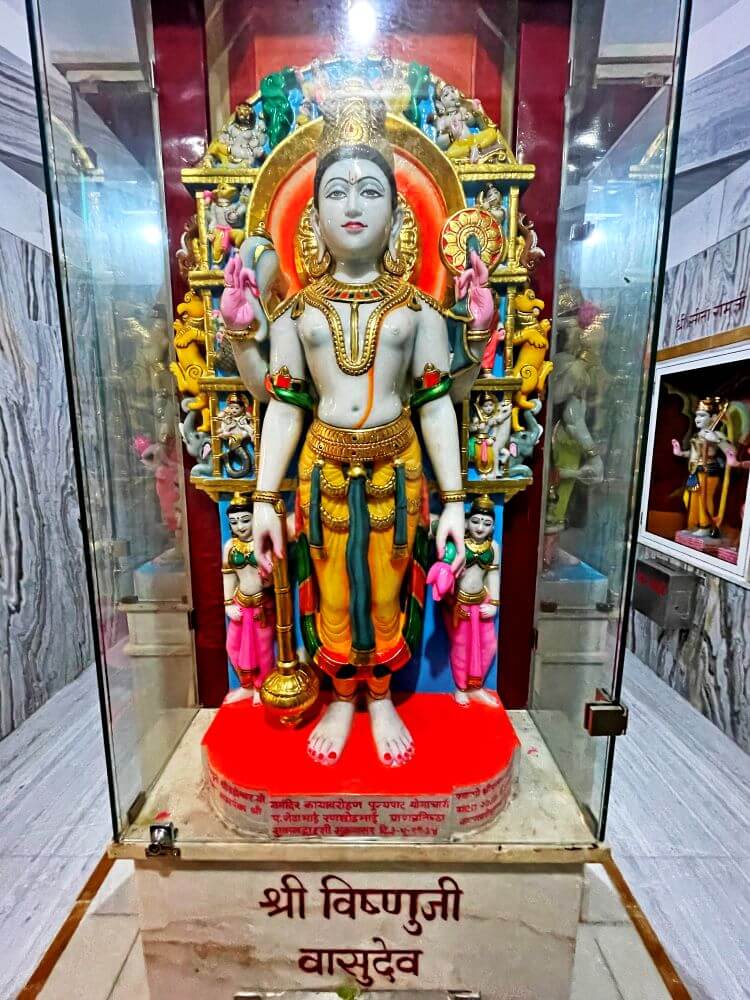 with carvings of gatekeepers (dwarapalas) holding a human skull and a drum (damaru). At the base of the columns are images of goddesses, while at the top are celestial nymphs (surasundari). The lintel above the entrance has intricate carvings, and a small image of Ganesha is sculpted at the centre. The arch above the entrance displays images of Shiva and Parvati, with deities on either side. Carvings of Shiva’s vehicle, Nandi (the bull), can also be found on both sides of the entrance.
with carvings of gatekeepers (dwarapalas) holding a human skull and a drum (damaru). At the base of the columns are images of goddesses, while at the top are celestial nymphs (surasundari). The lintel above the entrance has intricate carvings, and a small image of Ganesha is sculpted at the centre. The arch above the entrance displays images of Shiva and Parvati, with deities on either side. Carvings of Shiva’s vehicle, Nandi (the bull), can also be found on both sides of the entrance.
Inside the temple grounds, a pathway leads to the main temple, with a rectangular pond and garden in the centre. The temple stands on a high marble platform, and wide steps flanked by two pillars lead up to the main entrance hall (mukhamandapa). The temple layout consists of the entrance hall, assembly hall (sabhamandapa), a small vestibule (small antarala or pragriva), and the sanctum (garbhagriha). The assembly hall has side chambers and a roof that narrows towards the top. The sanctum is crowned with a ‘Nagara’-style spire that curves inward beneath the ‘amalaka’ (circular stone) at the top, typical of this architectural style.
The entrance hall features intricately carved stone pillars, with decorative arches between the central columns. In the middle of the ceiling is a beautiful sculpture of Lord Nataraja (the dancing form of Shiva).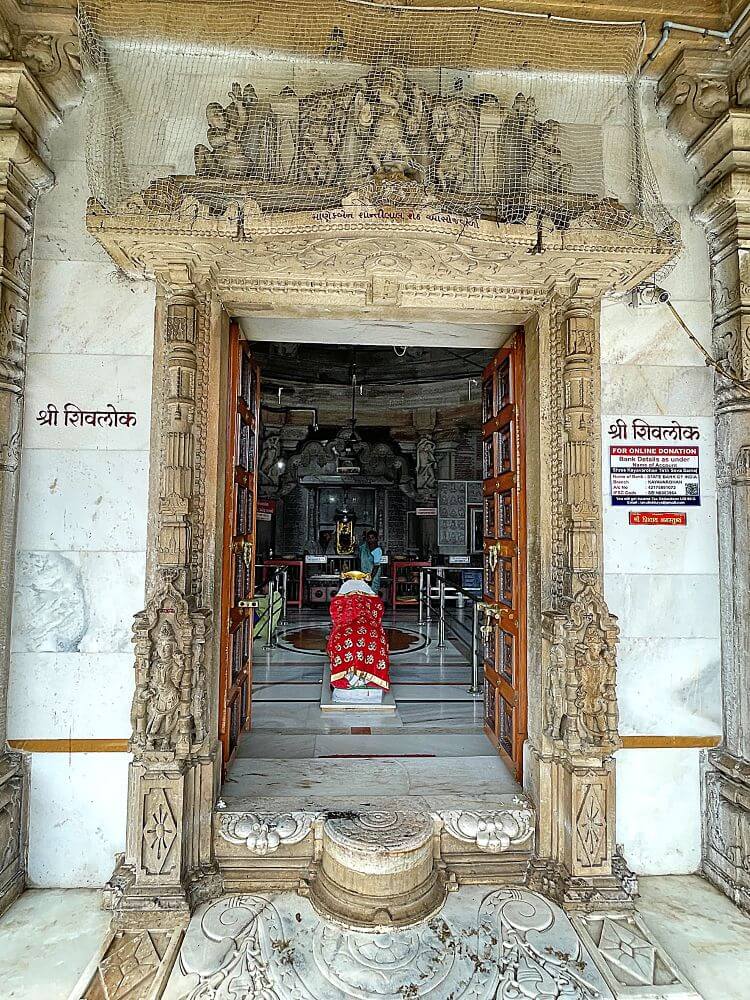 The main assembly hall has three intricately carved entrances, each adorned with detailed craftsmanship. The central doorway features a carving of Ganesha, while the left doorway has an image of Shiva, and the right doorway features Saraswati, the goddess of knowledge. The hall is enclosed, with doors leading to the side chambers. In the centre of the hall stands a large black stone statue of Nandi. The walls of the hall are engraved with various yoga postures along with their names, making this temple famous as the Brahmeshwar Yog Temple. On the half-columns embedded in the walls of the hall (mandapa), there are intricately carved figures of celestial maidens (surasundari) placed at the top. The ceiling of the hall, which is dome-shaped, also features delicate sculptures and decorative carvings. On the front side of the hall, along the walls next to the small vestibule (antarala), there are square niches containing statues of Shiva and the Goddess.
The main assembly hall has three intricately carved entrances, each adorned with detailed craftsmanship. The central doorway features a carving of Ganesha, while the left doorway has an image of Shiva, and the right doorway features Saraswati, the goddess of knowledge. The hall is enclosed, with doors leading to the side chambers. In the centre of the hall stands a large black stone statue of Nandi. The walls of the hall are engraved with various yoga postures along with their names, making this temple famous as the Brahmeshwar Yog Temple. On the half-columns embedded in the walls of the hall (mandapa), there are intricately carved figures of celestial maidens (surasundari) placed at the top. The ceiling of the hall, which is dome-shaped, also features delicate sculptures and decorative carvings. On the front side of the hall, along the walls next to the small vestibule (antarala), there are square niches containing statues of Shiva and the Goddess.
The entrance to the sanctum is also intricately carved in stone, with gatekeepers on either side. One gatekeeper holds a skull and a ‘damaru’ (a small drum), while the other is a human figure with the body of Nandi. Below the door is a beautifully carved ‘vyala’ (mythical beast), and a crescent-shaped stone (ardha-chandrashila). Inside, the black stone Shiva linga is elevated above the ground. What makes this linga unique is the meditative figure of Lord Lakulish carved into the front.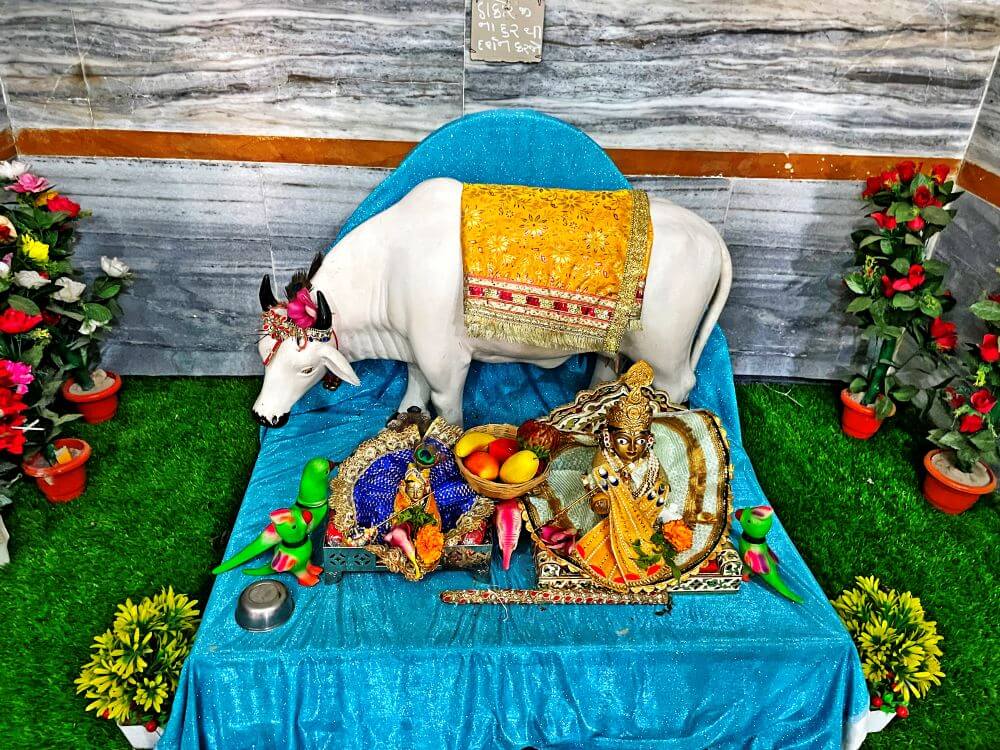 In front of the linga, on a small platform, is another small image of Lakulish.
In front of the linga, on a small platform, is another small image of Lakulish.
The temple’s ceilings, pillars, and outer walls are adorned with beautiful carvings, including various deities and celestial figures. You can see different forms of Shiva here, including Kiratashiva, Tripurantaka, Andhakeshvara, Natyashiva. There are also depictions of deities like Agnidev, Shakambhari, Pranashakti, Bhimadevi, Kubera, Raktachamunda, Haygreeva, Brahma, Varahi Mata, Vaayu, Varuna, Lokpala and more. The temple also features unique celestial nymphs, known as ‘surasundari’, carved in various poses. The temple includes an innovative water drainage system (pranal), designed to carry water from the sanctum after rituals like ‘abhishek’. A woman sitting with her palms open is depicted at the mouth of the ‘pranal’, which is a unique feature of this temple.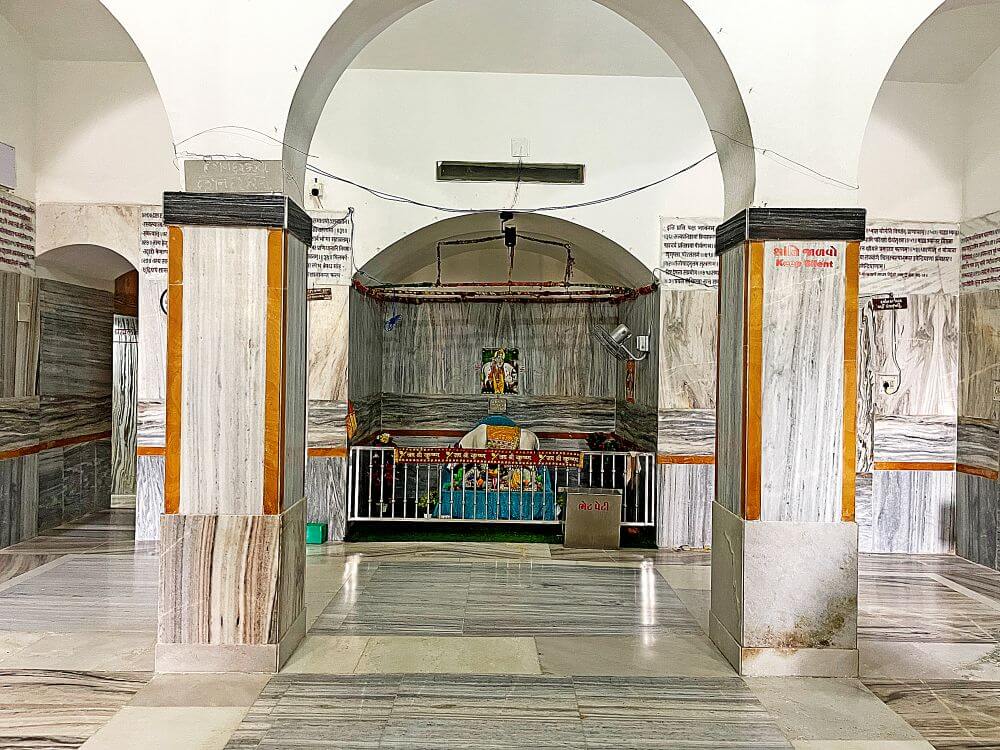
Known for its artistic beauty and rich sculptural heritage, this temple is often referred to as Shivlok (the abode of Shiva). Beneath the temple lies Mokshadham, a sanctum that represents Brahmalok and Vishnulok. Devotees can descend a few steps to view marble idols of Brahma, Vishnu, Krishna, and the sacred cow (gomata). The temple complex also houses shrines dedicated to Ganesha, Hanuman, and Parvati.
Devotees believe that Lakulish Mahadev fulfills their desires, much like the wish-fulfilling tree (kalpavriksha). As a result, pilgrims from all over India visit this ancient pilgrimage site. Large crowds gather here during Mahashivratri and on the Mondays of the month of Shravan. Additionally, regular religious programmes such as ‘yagnas’ and yoga camps are organised by the temple trust. The temple is open for darshan from 6 AM to 9 PM daily.
